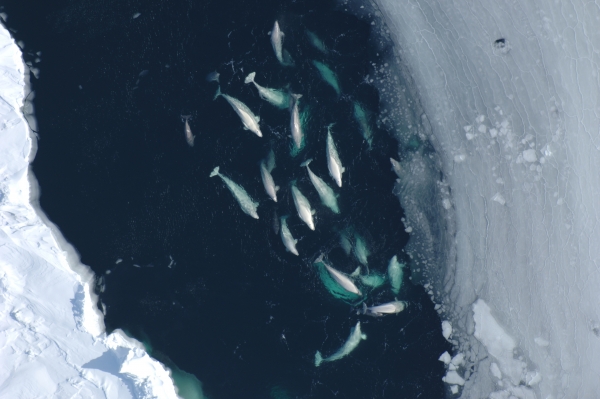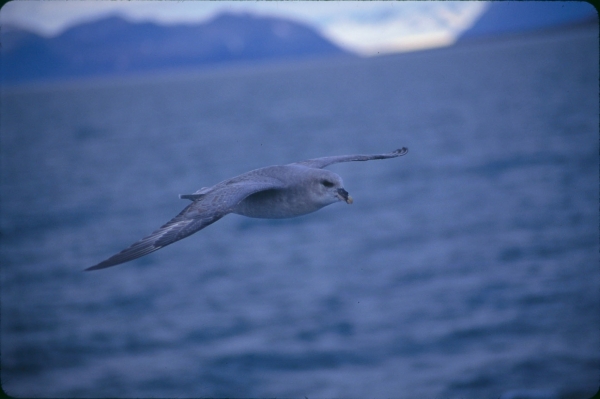By Hans Meltofte, Chief Scientist and Executive Editor of the Arctic Biodiversity Assessment
The Arctic Council's working group on Conservation of Arctic Flora and Fauna (CAFF) published it's hitherto largest analysis of "Status and trends in Arctic biodiversity" in the Arctic Biodiversity Assessment (ABA) in 2013. In this 674 page book, 253 Arctic scientists evaluate the current situation for species and ecosystems in the Arctic and give a multitude of recommendations on better management and conservation in the Arctic as well as abroad—the latter regarding anything from climate change and contaminants to the living conditions for migratory species when spending the wintertime spread over almost all parts of the globe.

Taken together, the most serious pressure on Arctic Biodiversity in the past was overharvest, whereas the most serious present and future pressure is climate change. Most overharvest problems are relatively easy to address and many have been alleviated, while others such as heavily depleted seabird populations in Greenland remain to be solved. An effective response to climate change, on the other hand, seems at the moment to be outside the capacity of human societies. This gives gloomy prospects for ecosystems and species in the Arctic and elsewhere.
To safeguard Arctic biodiversity and the services we receive from it, three spatial levels of stressors must be addressed: (1) global and circumpolar stressors like climate change and long-range transport of contaminants by air and sea water, (2) regional stressors like overexploitation, expanding boreal and invasive alien species, and (3) more 'localized' stressors like mineral extraction, oil development and ship accidents.

The most important recommendations, as prioritized by the 35 lead authors of the ABA, are:
- Conserving the unique Arctic biome will require all possible efforts to curb human-induced global warming. As I see it, this should include reductions in both ends of the supply chain: more than half the already known oil, gas, and coal reserves must be left in the ground—preferably including the most risky areas—for the next several decades, combined with significant reductions in the combustion of fossil fuels.
- Global and regional actions to reduce both legacy and new environmental contaminants entering Arctic ecosystems should continue and, where necessary, intensify under existing international conventions.
- Effective conservation of Arctic biodiversity needs to be global in scope and requires significant international cooperation to succeed. Any action to solve one global challenge should take others into account so that measures to solve one stressor do not worsen others.
- To maximize the resilience of Arctic ecosystems, effective protection of large representative tracts of habitat, including hotspots for unique Arctic biodiversity (i.e. not areas with most species or high productivity, but areas with most Arctic endemic species) and northern 'refugia' areas, is of paramount importance. This includes Arctic islands together with mountainous areas and multi-year sea-ice refuges where unique marine Arctic biodiversity has the best chance of surviving climate change.
- A major oil spill in ice filled Arctic waters would be detrimental to biodiversity and very difficult to clean up, particularly under problematic weather, light, and ice conditions. However, if oil development is undertaken, a precautionary approach adhering to regulations and guidelines specific to the Arctic and based on the best available science would reduce risks. This approach should include avoiding development activities in the most sensitive areas.
- Focused harvest management of fish, birds and mammals is needed on those species and populations that have experienced major declines for which harvest is one of the causal factors.
- To protect staging and wintering wetland areas for Arctic waterbird migrants from both habitat loss and overharvest, concerted international efforts should be conducted to conserve a network of key areas and address overharvest. This is especially critical in the East Asian flyway.
- To effectively protect Arctic native species and ecosystems from devastating effects of invasive alien species, appropriate efforts are needed to prevent their establishment in the Arctic. Early detection and preventative actions should focus on areas of human activity and
disturbance. - To protect Arctic biodiversity from severe impacts from local development and industrial activity, biodiversity conservation needs to be a cornerstone of natural resource management and land and marine planning.
- Improved monitoring and research is needed to survey, map, monitor, and understand Arctic biodiversity including integrated and repeated data collection following recommended standardized protocols and priorities, and involving Arctic citizens in the survey and monitoring, if we are to move ahead with science-informed decisions in the Arctic.
The most obvious next step is a circumarctic spatial analysis of hotspots for Arctic endemic biodiversity, so that a total terrestrial and marine Arctic network of protected areas can be outlined based on the 'complementary species richness' method. Thus, the ABA has succeeded in identifying what needs to be done. Now comes the harder step of actually doing it.
As a major follow up on the ABA report, the Arctic Biodiversity Congress was convened 2-4 December 2014 in Trondheim, Norway. The event was organized to promote the conservation and sustainable use of Arctic wildlife and ecosystems by encouraging interdisciplinary dialogue and action between scientists, policy makers, indigenous peoples, industry, and civil society.
Goals of the 2014 Congress included:
- Present and discuss the main scientific findings in the ABA report;
- Facilitate inter-disciplinary discussion, action, and status updates on the ABA recommendations (see priority recommendations above) among scientists, government officials, policy makers, traditional knowledge holders, indigenous peoples, and industry representatives;
- Provide scientific, indigenous, policy, non-governmental organizations (NGOs), academia, and industry audiences the opportunity to collaborate around the themes of the ABA;
- Advise the Arctic Council's CAFF on national and international implementation of the ABA recommendations and on development of an ABA Implementation Plan for the Arctic Council Ministerial Meeting in 2015;
- Highlight the work of CAFF and the Arctic Council in circumpolarbiodiversity conservation and sustainable development; and
- Mainstream biodiversity and ecosystem services ensuring that the recommendations of the ABA are implemented by not just government, but many organizations and people, and across sectors.
The Arctic Biodiversity Assessment is available to be downloaded as individual chapters or as a full report here.
The nine key findings of the assessment are available here.
A synthesis of suggested research and conservation priorities are available to be downloaded here.
Hans Meltofte, Chief Scientist and Executive Editor of the Arctic Biodiversity Assessment, is Senior Scientist at the National Environmental Research Institute, Department of Arctic Environment and the Department of Bioscience, University of Aarhus. He has volunteered at a number of NGOs including positions as board member of the Danish Ornithological Society and Wetlands International.
